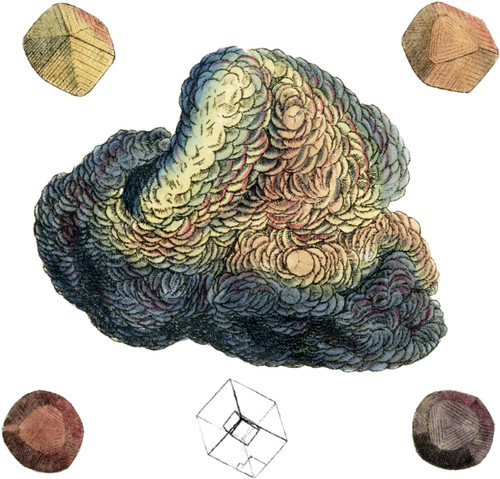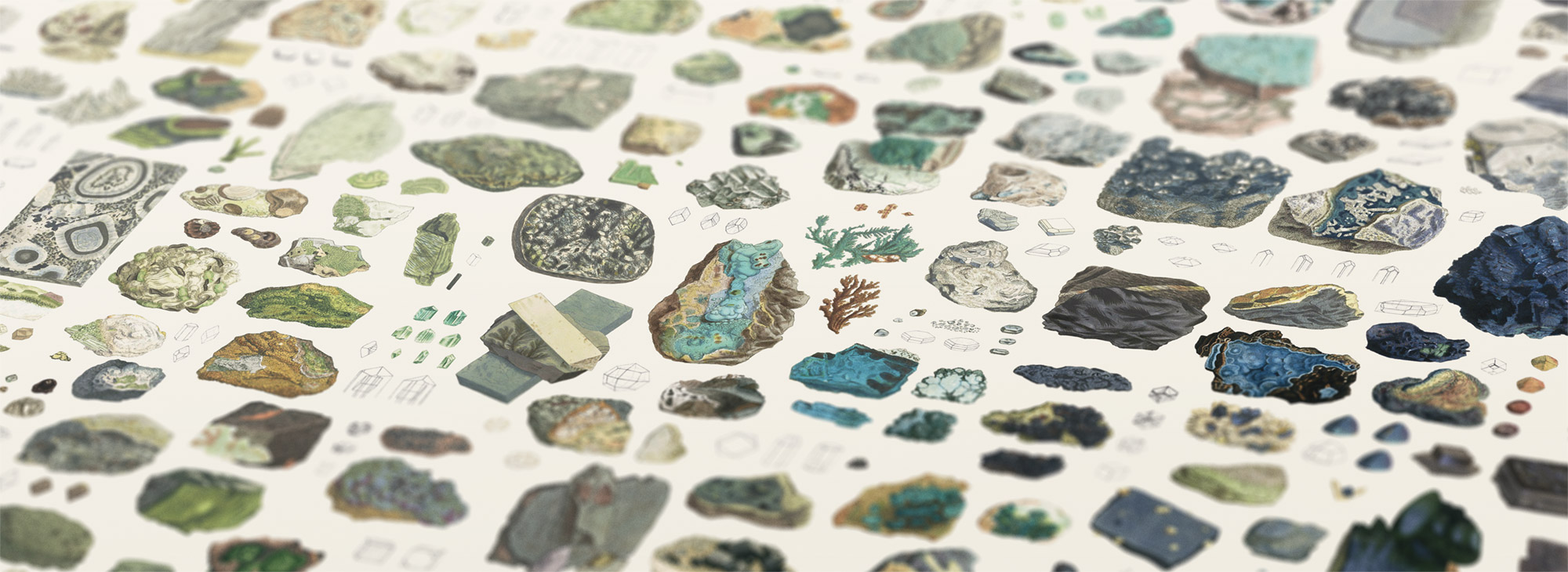 Enlarge
Enlarge
British Mineralogy
Spathos Iron Ore; Lenticular crystallized Carbonate of Lime
- Class 2. Earths.
- Order 1. Homogeneous.
- Gen. 2. Lime.
- Spec. 4. Carbonate of Lime.
- Syn.
- Calcareous or Sparry Iron Ore. Kirw. v. 2. 190.
- Spathose Iron Ore. Bab. 201.
- Spathiger eisenstein. Emmerl. v. 2. 329.
- Chaux carbonatée ferrifère lenticulaire. Haüy, v. 2. 178.
- Mine de fr spathique. De Lisle, v. 2. 281.
This singular group of spathose iron ore, as it is often called when gathered with the iron ores of Devonshire, may with much propriety be called a calcareous spar. The crystallization is found to be as it were intermediate between the latter and the former. The top left hand figure shows the primitive rhomb somewhat flattened, formed by aggregations of the primitive rhombs of calcareous spar. See Tab. 2, 3, and 13. The right hand upper figure differs only in having the apex truncated, and the edges having rounde facets. The lower left hand figure shows the same with the rounded facets having become the principal faces of the crystal. It is together rather flatter and rounter. The lower figure on the right hand is still flatter and rounder, and approaches more to the irony appearance.
The first is a pearl spar of the usual light appearance, the second more coloured with iron, the next more so still, and the last most of all. They may perhaps contain a little manganese. The outline shows the position of the primitive rhomb in the upper figures, in the others it is situated as in the æquiaxe. Some specimens of these were sent me by Lord Heathfield from Devonshire. I have had others of nearly the same nature from the Isle of Man by favour of the Duke of Athol and Lord Henry Murray. They seem to indicate iron in their neighbourhood, and may be useful in smelting it; but are themselves very deceitful, their appearance giving a stronger indication of iron than belongs to them; which will in general be detected most readily by breaking, as the fresh fragment discovers them to be a mere limestone with a slight pearly tinge, which on being exposed to the common air and water will assume the same deceitful tinge as the former exposed parts. These have generally been reckoned among the lenticular ores, and may have deceived many by their external appearance.

